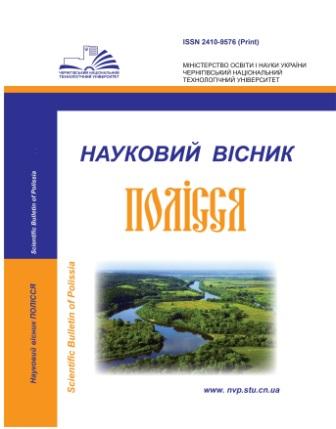СТИМУЛЮВАННЯ ІНВЕСТИЦІЙ У РОЗВИТОК ПОСТ-КОНФЛІКТНИХ ТЕРИТОРІЙ
Ключові слова:
інвестиції, стимулювання, пост-конфліктні території, розвиток, парадигма, інвестиційні пріоритети, напрями інвестуванняАнотація
У статті розглянуто теоретичні підходи до вироблення інвестиційної політики розвитку пост-конфліктних територій, визначено передумови формування парадигми її реалізації, окреслено пріоритети та систематизовано основні напрями інвестування.Посилання
Przeworski, A., Alvarez, M., Cheibub, J., and Limongi, F. (2000). Democracy and Development: Political Institutions and Wellbeing in the World 1950–1990. Cambridge, United Kingdom : Cambridge University Press.
Acemoglu, D. (2008). Oligarchic Versus Democratic Societies. Journal of the European Economic Association, 6 (1) : 1-44.
Blattman, C., and Miguel, E. (2010). Civil War. Journal of Economic Literature, 48 (1): 3-57.
Blattman, C. (2010). Post-conflict Recovery in Africa : The Micro Level, entry for the Oxford Companion to the Economics of Africa, edited by Ernest Aryeetey, ShantaDevarajan, Ravi Kanbur, and Louis Kasekende, Oxford : Oxford University Press.
Hacioglu, Ü., Çelik, E., & Dinçer, H. (2012). Risky Business In Conflict Zones : Opportunitie sand Threats in Post Conflict Economies. American Journal of Business and Management, 1 (2): 76-82.
Ianchovichina, E. and Lundstrom, S. (2009). Inclusive Growth Analytics : Framework And Application Retrieved from : http://dx.doi.org/10.1596/1813-9450-4851.
Maier, R. (2009). Early Recovery in Postconflict Countries. Clingendae Institute, The Hague, The Netherlands.
David, Antonio C., Bastos, Fabiano R. and Mills, M. (2011). Post-conflict Recovery : Institutions, Aid, or Luck? IMF Working Paper WP/11/149.
Todaro, Michael P. and Smith, Stephen C. (2012). Economic development, 11th ed, Boston, Addison-Wesley.
Mayer, B. S. (2000). The Dynamics of Conflict Resolution: A practioner’s Guide. Jossey-bass, Inc. California.
Collier, P. (2009). Post-conflict Recovery : How Should Strategies Be Distinctive? Journal of African Economies, 18, AERC suppl.1 : i99–i131.
World Bank (2011). Conflict, Security and Development. World Development Report. Washington : World Bank.
Elbadawi, I., Kaltani, L., and Schmidt-Hebbel, K. (2008). Foreign Aid, the Real Exchange Rate, and Economic Growth in the Aftermath of Civil Wars.World Bank Economic Review, 22 (1) : 113-140.
Feldstein, M. and Horioka, C. (1980). Domestic Saving and International Capital Flows. Economic Journal, 90 (358) : 314–329.
UN. Disarmament, Demobilization and Reintegration. Retrieved from : http://www.un.org/en/-peacekeeping/issues/ddr.shtml.
Cerra, V., and Saxena, S. (2008). Growth Dynamics : The Myth of Economic Recovery. American Economic Review, 98:1, 439–457.
U.S. Agency for International Development (2009). A guide to economic growth in post-conflict countries. Office of Economic Growth. Bureau for Economic Growth, Agriculture and Trade.
##submission.downloads##
Як цитувати
Номер
Розділ
Ліцензія
Авторське право (c) 2017 Науковий вісник Полісся Чернігівського національного технологічного університету

Ця робота ліцензується відповідно до Creative Commons Attribution-NonCommercial 4.0 International License.
1. Політика, яка рекомендується журналам, що пропонують відкритий доступ Автори, які публікуються у цьому журналі, погоджуються з наступними умовами:- Автори залишають за собою право на авторство своєї роботи та передають журналу право першої публікації цієї роботи на умовах ліцензії Creative Commons Attribution License, котра дозволяє іншим особам вільно розповсюджувати опубліковану роботу з обов'язковим посиланням на авторів оригінальної роботи та першу публікацію роботи у цьому журналі.
- Автори мають право укладати самостійні додаткові угоди щодо неексклюзивного розповсюдження роботи у тому вигляді, в якому вона була опублікована цим журналом (наприклад, розміщувати роботу в електронному сховищі установи або публікувати у складі монографії), за умови збереження посилання на першу публікацію роботи у цьому журналі.
- Політика журналу дозволяє і заохочує розміщення авторами в мережі Інтернет (наприклад, у сховищах установ або на особистих веб-сайтах) рукопису роботи, як до подання цього рукопису до редакції, так і під час його редакційного опрацювання, оскільки це сприяє виникненню продуктивної наукової дискусії та позитивно позначається на оперативності та динаміці цитування опублікованої роботи (див. The Effect of Open Access).


